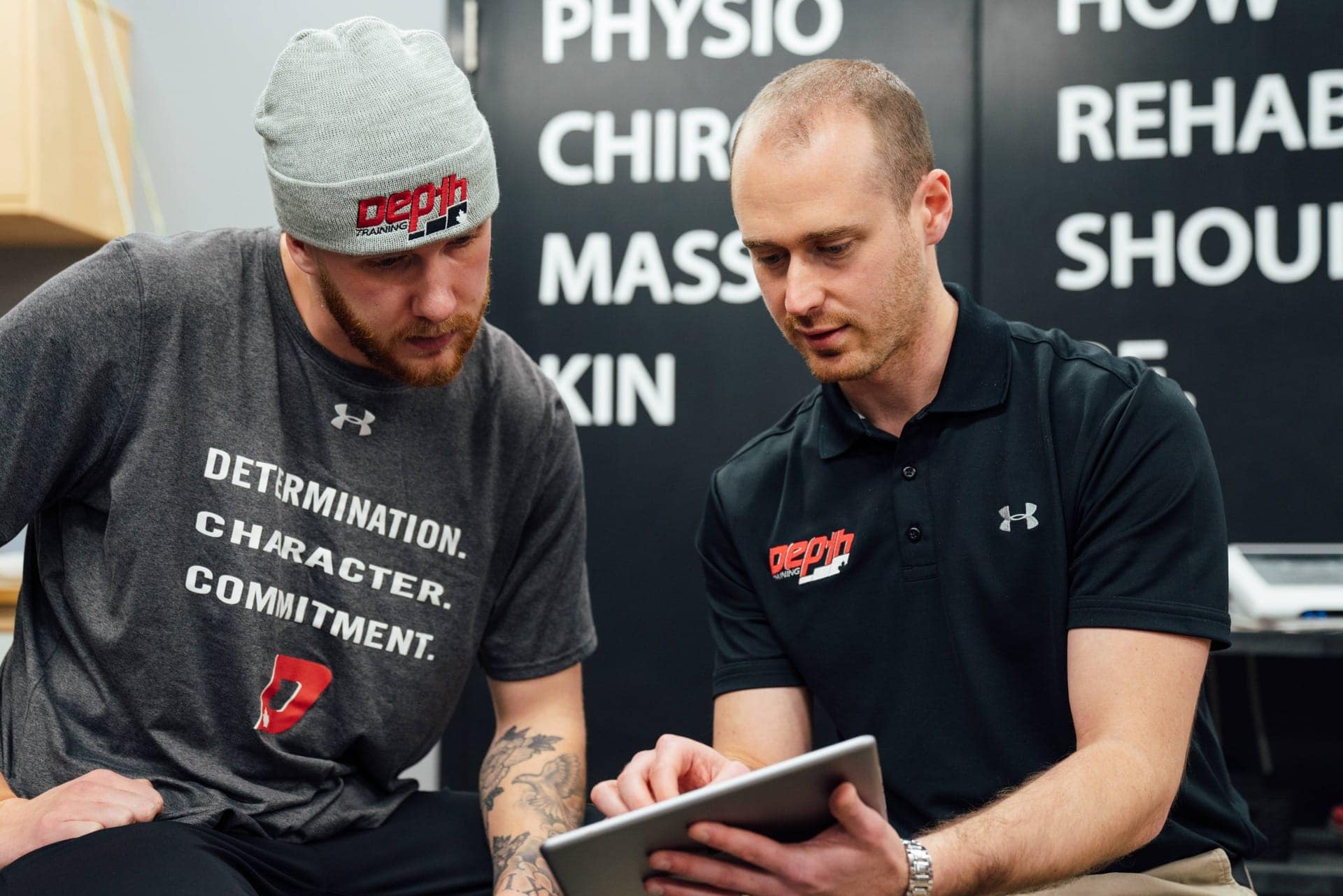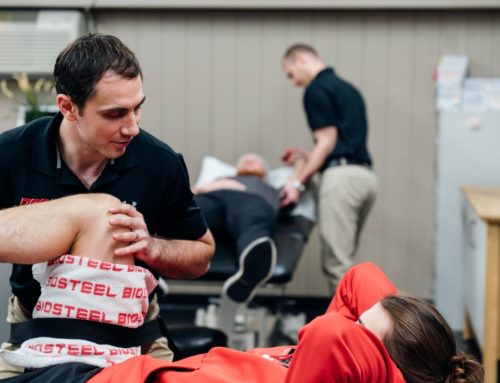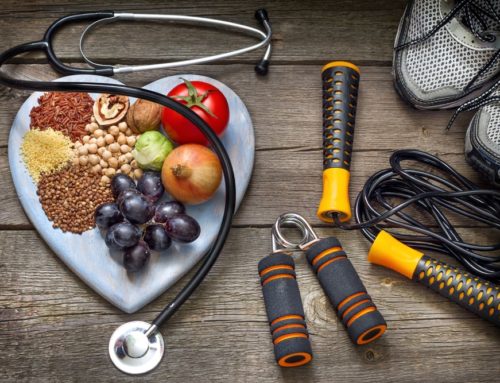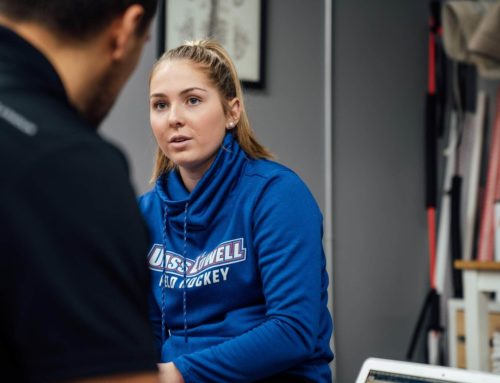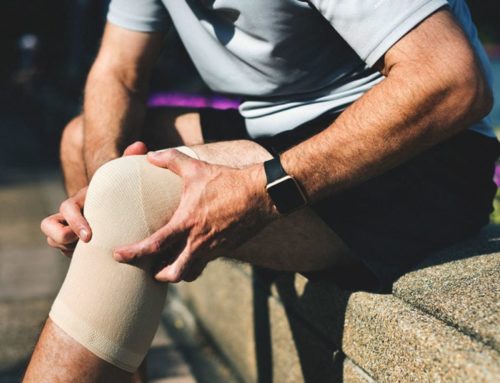Getting Hurt Sucks.
It’s disruptive to our routines and gets in the way of our training. It can threaten our income, limit our social enjoyment, and constitutes as much of a blow to our identity as it does to our body.
But try as we might, we’ll never be able to fully prevent injuries (for our purposes, we’ll define an “injury” as a state where someone is unable to perform a valued task/activity to the extent that they want to). There’s always some risk of injury inherent in our daily tasks whether we’re stepping onto a field for practice or crossing the street. We can – and should – try to reduce our risk of injury as much as possible by building physical resilience through training, managing training loads appropriately and optimizing recovery. But even with all that, stuff happens.
Before you start calling me Mr. Doom and Gloom, hang on a minute. We have a distinct opportunity here to ask a valuable question: “If we can’t prevent injuries, then what matters the most when we DO get hurt?” Let’s start with these:
Don’t Freak Out
Injuries can be scary and it’s common to experience feelings of fear, anxiety, grief and anger. There’s nothing wrong with any of this and I think you should allow yourself to feel these things. Feel them, process them, and bring things back to an emotional even keel. We know from the research that pain catastrophizing – an exaggerated negative mental state during an actual or anticipated pain experience – is one of the most important psychological predictors of pain experience.1 The tendency to catastrophize while in pain contributes to more intense pain and increased emotional distress.
This might seem easier said than done. I get it. I’ve been through it myself, multiple times in fact. It’s hard. I think that we can summarize things simply with the following:
- Whatever happened, happened. It’s in the past now. The incredible thing that you get to decide is what happens from here
- Find what you can do instead of solely focusing on what you can’t.
- Keep things objective. If you could only run for 30 seconds last week and this week you ran for 1 minute, that’s a 100% improvement. It may not seem like a lot but it adds up
Work with Someone Who “Gets It”
If you’re dealing with a situation that feels beyond your ability to manage it, it’s probably useful to team up with a registered health professional who can help guide the path to recovery. These are my personal criteria for deciding if a healthcare professional is worth trusting with your time, money and well-being:
- Everything starts with your story
- Pain is a complex, messy thing which can’t be separated from our thoughts, emotions, experiences and identity.2 We’ve tried – it doesn’t work well. Your clinician needs to actively listen as you describe what’s happened, how it’s affecting you, what you think is going on, and what meaningful things you want to get back to.
- They stay up to date on current research
- We’re constantly updating our understanding of pain, injury, rehab and performance training. A clinician who stays current by reading lots of research is more likely to stick to practices that are best supported by evidence.
- They understand what it takes to do what you do
- If you’re an athlete, you probably want to be treated by another athlete. Clinicians who are athletes themselves understand what it’s like to train hard, to compete and to be sidelined by an injury. They can conceptualize the demands of your sport or activity and figure out what it’ll take to get you back to doing what you love. Even if you don’t have competitive aspirations and just want to get through your days or enjoy your hobbies more, a clinician with a strong understanding of exercise physiology and strength & conditioning is probably a good match for you.
- They create a logical game plan and focus on the important things
- For your rehab plan to work well, you need to believe in it. It needs to make sense to you, and it’s up to your clinician to make sure that it does. Beyond that, the research is clear that some of the most impactful things clinicians can do in rehab are:
- Reassuring their clients and setting appropriate expectations (about timeline, possible setbacks, etc.).3
- Minimizing loss of fitness by modifying their clients’ training and activities during rehab, especially if returning to sport is a goal.
- Minimizing dependency and building self-efficacy. In other words, your clinician should give you the knowledge and strategies to effectively manage things on your own over the course of the rehab plan.4
- For your rehab plan to work well, you need to believe in it. It needs to make sense to you, and it’s up to your clinician to make sure that it does. Beyond that, the research is clear that some of the most impactful things clinicians can do in rehab are:
(We hope you’ll agree that our Depth Rehab team fits that description nicely)
Stick With It
The rehab process is rarely ever predictable. In fact, it’s a pretty safe bet that you’ll encounter some tough days on the road to recovery. During these “bad” days it’s easy to think that you’ve taken three steps backward and wonder if you’ll ever be better. I’d like to suggest a few things:
- Remember that this is normal and you’re not alone in feeling this way
- We can’t really rush the process. Mother Nature needs time to do her thing
- Don’t forget to look at objective outcomes. You might feel worse on any given day, but how’s your performance? Are you able to move more than you used to? Can you run further or faster? Can you lift more? Can you participate more fully in practice? Are you more productive at work? Are you more present with your family? Pain is tricky, which is why having these “mile markers” can help us to know that we haven’t lost as much ground as we thought
- Be patient and keep going. On the days that seem the hardest, acknowledge the hardship, resolve to do only what you can, and start looking for opportunities to turn that day into a “win.” A win might be as simple as going for that walk you’re avoiding or showing up to practice to do modified drills that you can tolerate. If we approach a setback with the resolve to rack up as many small wins as possible no matter what, we stop allowing ourselves to be totally at the mercy of circumstance. We can trust that these setbacks have a tendency of working themselves out5 and that we’ll be stronger individuals because of how we’ve dealt with them
In Closing
As challenging as recovering from an injury may be, we can make the process a little easier to navigate by keeping calm, being patient and persistent, looking for opportunities in the hardship and by working with a reputable professional who can help guide the path. I’ve listed some additional resources below for you to check out if you’re interested, and you’re always welcome to contact me directly at [email protected]. I’d love to help you however I can.
Thanks for reading, now let’s get after it!
Resources to learn more about pain, injury, rehabilitation and performance:
- The ClinicalAthlete Podcast, Instagram: @clinicalathlete, www.clinicalathlete.com
- The Barbell Medicine Podcast, Instagram: @barbell_medicine, www.barbellmedicine.com
- The Logic of Rehab, thelogicofrehab.com
- Greg Lehman’s Blog, greglehman.ca/blog
References:
- Sullivan, M. J., Thorn, B., Haythornthwaite, J. A., Keefe, F., Martin, M., Bradley, L. A., & Lefebvre, J. C. (2001). Theoretical perspectives on the relation between catastrophizing and pain. The Clinical journal of pain, 17(1), 52-64.
- Stilwell, P., & Harman, K. (2019). An enactive approach to pain: beyond the biopsychosocial model. Phenomenology and the Cognitive Sciences, 1-29.
- Louw, A., Zimney, K., O’Hotto, C., & Hilton, S. (2016). The clinical application of teaching people about pain. Physiotherapy theory and practice, 32(5), 385-395.
- Darlow, B. (2016). Beliefs about back pain: the confluence of client, clinician and community. International Journal of Osteopathic Medicine, 20, 53-61.
- Whitney, C. W., & Von Korff, M. (1992). Regression to the mean in treated versus untreated chronic pain. Pain, 50(3), 281-285.
Written by: Jared Maynard, Registered Physiotherapist, Clinical Athlete Provider, Complete Concussion Management Provider

